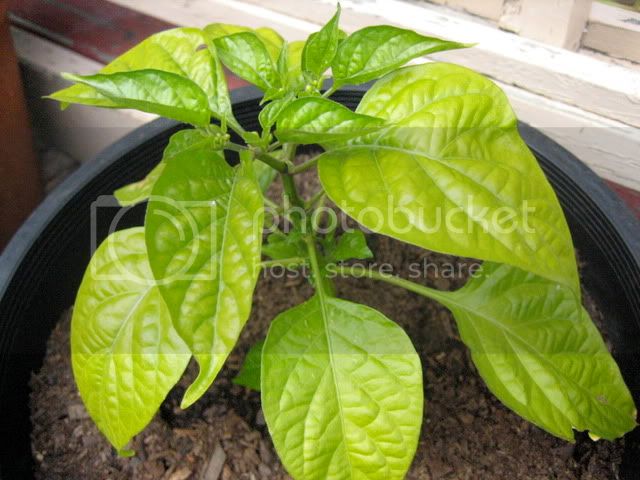I know this has been gone over a million times here but I couldn't find help through the "search" . Or I'm just plain lazy... Most likely lazy.....
I have quite a few plants that have weird yellowing of the leaves(almost yellow/light orange), but otherwise look healthy. Mainly my C.chinense i.e., Chocolate Habs, Nagas, Savia. I thought at first over watering, but the soil's just moist until almost dry then I water. The main ones in question get morning and afternoon sun so I thought that may be an issue. They get a rest-bit for about 2 hours around 2 to 4 o'clock, cuz of the big tree in the back yard. Or maybe a Nitrogen issue. They're getting a dose of 4-5-3. Maybe they need a Nitrogen boost? Does my Nitrogen seem low? I tried a bit of epson salt a week ago and there were no results.

I have quite a few plants that have weird yellowing of the leaves(almost yellow/light orange), but otherwise look healthy. Mainly my C.chinense i.e., Chocolate Habs, Nagas, Savia. I thought at first over watering, but the soil's just moist until almost dry then I water. The main ones in question get morning and afternoon sun so I thought that may be an issue. They get a rest-bit for about 2 hours around 2 to 4 o'clock, cuz of the big tree in the back yard. Or maybe a Nitrogen issue. They're getting a dose of 4-5-3. Maybe they need a Nitrogen boost? Does my Nitrogen seem low? I tried a bit of epson salt a week ago and there were no results.


 lol. I would check the Ph as well. What mix are you using?
lol. I would check the Ph as well. What mix are you using?